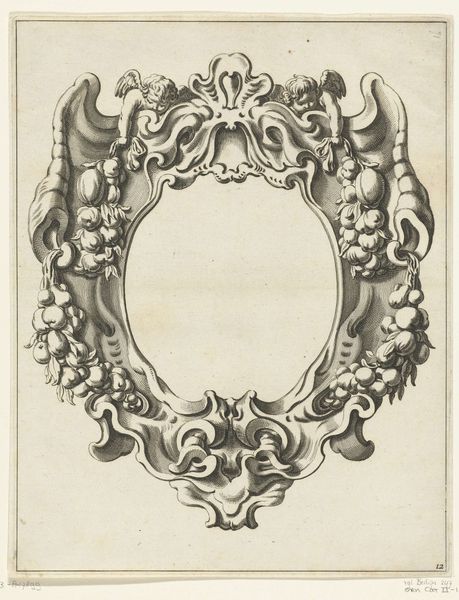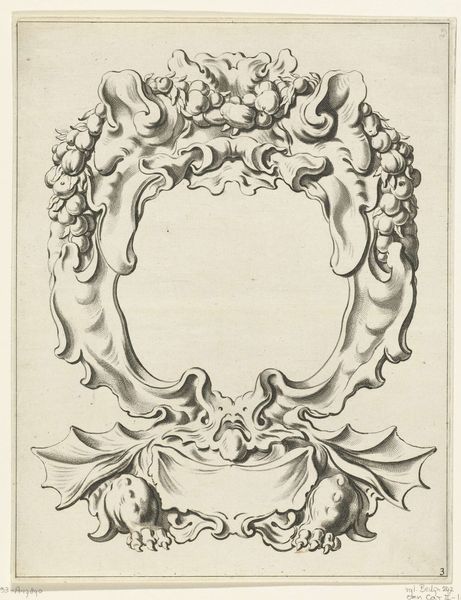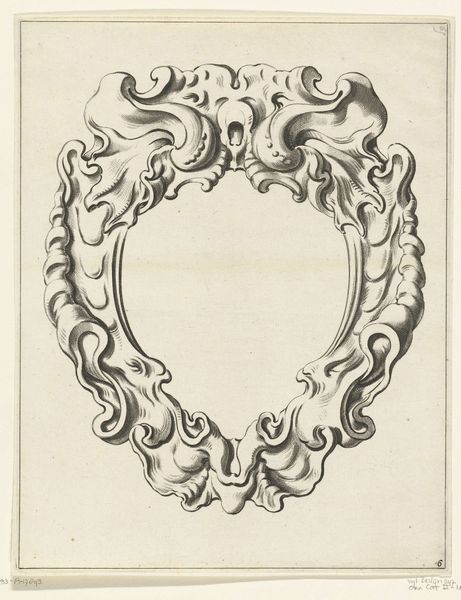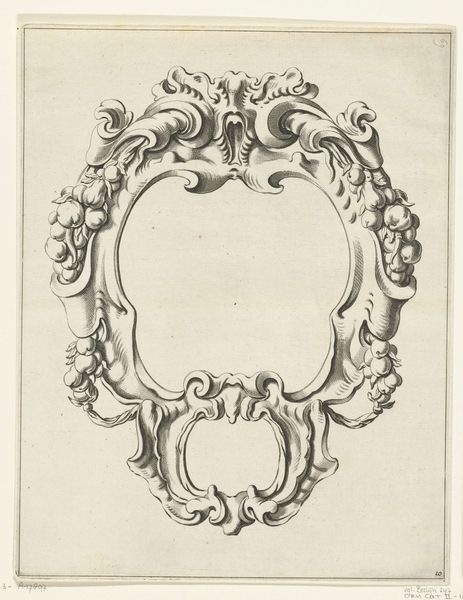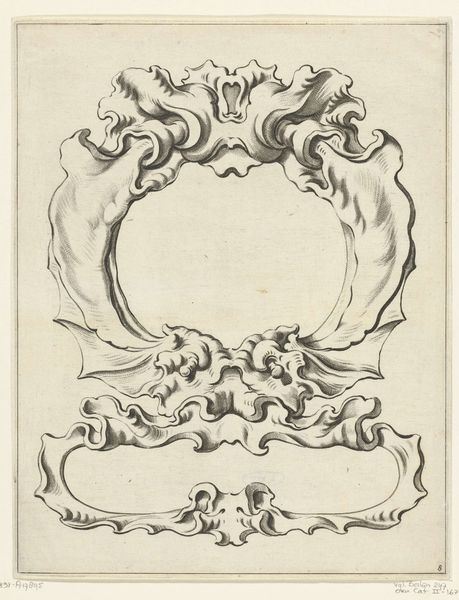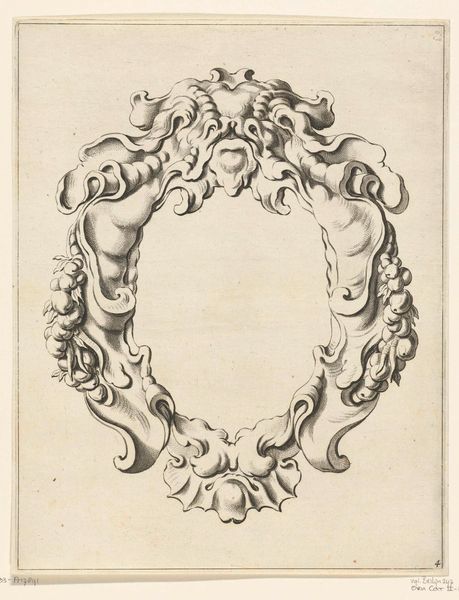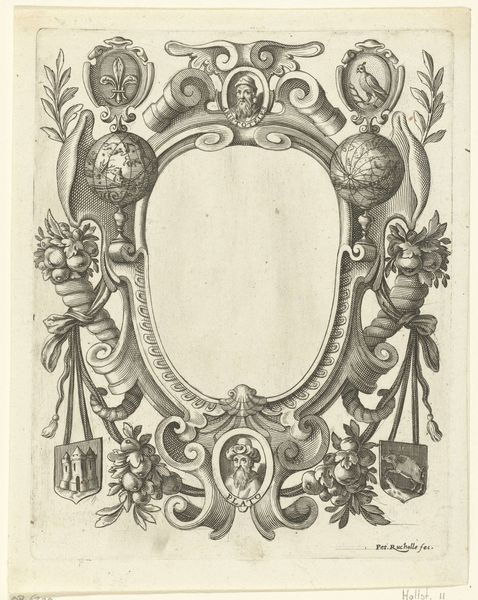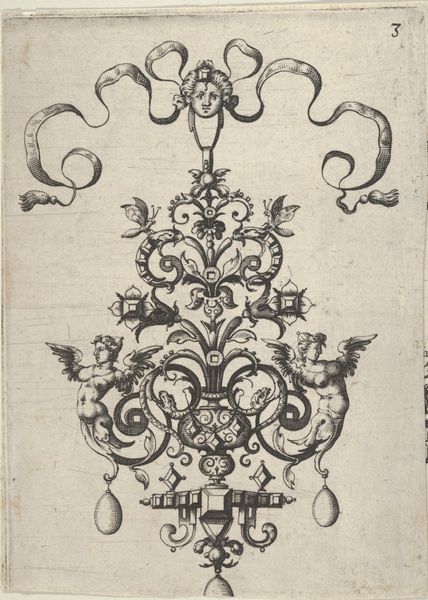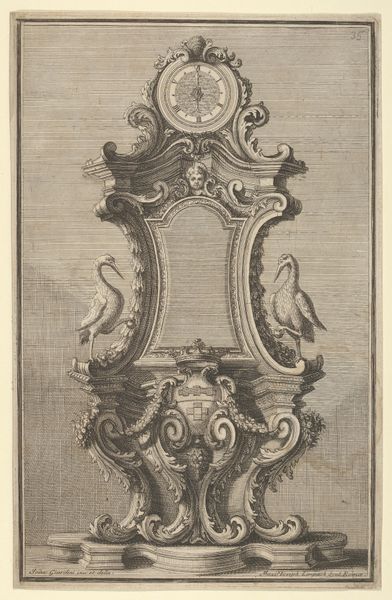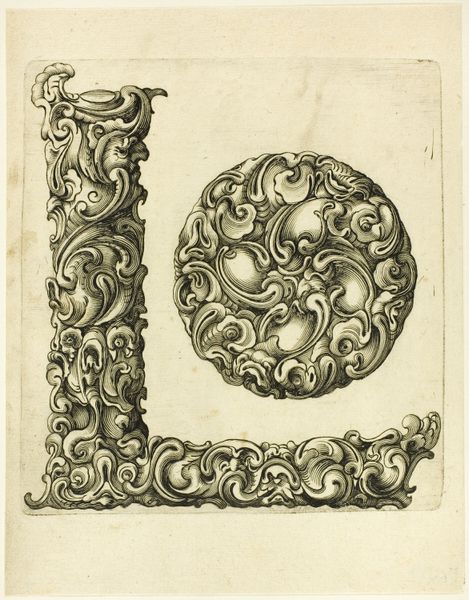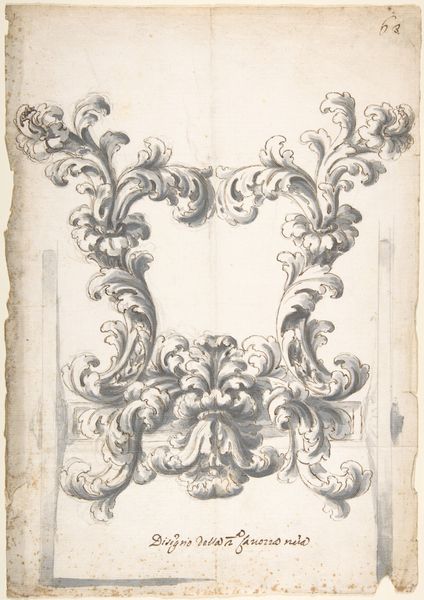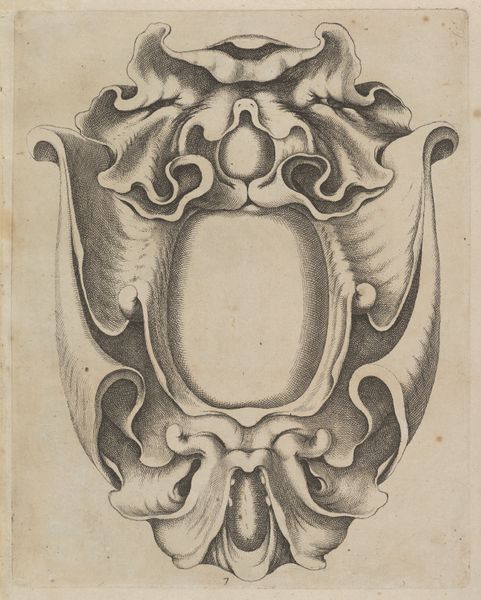
Veelderhande Niewe Compartimente (Plate 7) 1650 - 1674
0:00
0:00
drawing, print, engraving
#
drawing
#
allegory
#
baroque
#
pen drawing
# print
#
figuration
#
decorative-art
#
engraving
Dimensions: Plate: 9 7/16 × 7 1/2 in. (24 × 19 cm) Sheet: 14 × 11 in. (35.6 × 28 cm)
Copyright: Public Domain
Curator: This is Plate 7 from Michiel Mosyn’s Veelderhande Niewe Compartimente, dating from between 1650 and 1674. It’s currently held at the Metropolitan Museum of Art. What’s your first take on this drawing? Editor: Well, my immediate impression is its overwhelming, almost frantic busyness. The Baroque exuberance is undeniable; it practically leaps off the page despite its monochromatic rendering. It’s dizzying, isn’t it? Curator: Indeed. This intricate engraving showcases cherubs intertwined with overflowing arrangements of fruit and swirling foliage—a composition typical of decorative Baroque prints. Notice the prominence of the cherubs, how their chubby figures represent innocence and divine love? The fruit—pomegranates, grapes, pears—symbols of abundance, fertility, and perhaps even temptation, hearken back to classical allusions and garden paradises. Editor: Precisely! It's like a contained explosion of form, guided, nonetheless, by careful compositional choices. Look at the play of light and shadow achieved purely through line work. The engraver's skill to emulate depth, creating a sense of weightlessness despite the static medium, is phenomenal. The overall shape also provides stability while alluding to completeness; consider the implied symmetry too, echoed around an invisible central axis. Curator: These compartment prints acted as design sources for artisans: goldsmiths, carvers, tapestry makers. But it’s also an emblem, encapsulating specific virtues in an attempt to embody harmony between the terrestrial and the celestial spheres. Those cherubs serve as intermediaries, suggesting constant mediation between the earthly and divine orders. Editor: Right, it's more than mere ornamentation. The pattern itself guides the gaze, keeping you in constant movement across and around it. The eye never truly rests, mirroring life’s perpetual dynamism and flow. How, would you say, it invites us to feel, and remember? Curator: This sort of design embodies its time, a specific moment. By contemplating it we might explore cultural notions of luxury, devotion, the purpose of decoration… and how forms from nature intertwine with divine and human experiences in the realm of artistic expression. Editor: A small engraving, perhaps, but it opens worlds, just as it should!
Comments
No comments
Be the first to comment and join the conversation on the ultimate creative platform.
